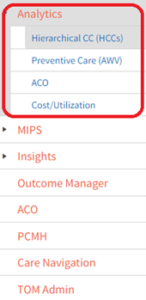Risk Adjustment and Hierarchical Condition Category coding is a payment model mandated by CMS in 1997, originally created to estimate future costs for a patient. It was only implemented in 2004 and was designed to identify patients with serious or chronic illness and assign a risk factor score to the person based upon a combination of a patient’s health conditions and demographic details. As healthcare shifts towards more value-based payment models; HCC coding is becoming more prevalent of a topic.
Risk Adjustment Factor or RAF scores uses a patient’s demographics and diagnoses to determine that patients risk score. This score measures how costly a patient is predicted to be for the current year. Within this payment model, patients in the same practice could have a different payment rate. The risk assessment data used is based off claims and medical records collected from doctors’ offices, in-patient hospital visits and outpatient clinics from the previous year. A multitude of factors determine the amount of risk and work involved to maintain the health of a patient. A patients RAF score is heavily weighted on HCC coding and documentation.
Medicare uses HCCs to reimburse Medicare Advantage plans based on their current members health. HCCs are diseases or conditions organized into body systems or comparable disease processes that Medicare correlated with increased cost of care. Out of 72,748 ICD-10-CM codes CMS identified 9,700 diagnoses associated with higher-than-average costs and then assigned them into 86 disease categories. Each of the 86 categories is then placed into a hierarchy of risk. The specific HCC category to which a diagnosis is assigned determines its contribution to the RAF calculation.
The top HCC categories include:
As the shift in healthcare continues to happen, ReportingMD is shifting with it. ReportingMD has just released a new program within the TOM Application to capture the importance of HCC coding and RAF scores. Analytics and the HCC Module are geared towards Value-Based care (VBC) analytics to drive network and provider performance and HCC performance insights with CMS and Commercial payers.

Within in this module, the user will be able to view provider level risk scores from the previous year, current year to date risk scores as well as the overall average risk score. Taking this information one step further, the user will be able to drill down to a provider specific report that will not only show the current risk score for that provider but also the usage of Unspecified HCC DX and Unsubmitted HCC DX.
Providing this information to the user will allow them to identify areas that need further improvement or education when it comes to HCC coding. Again, HCC coding directly correlates to your patient’s risk scores. Specificity is key when it comes to HCC coding and documentation. A provider must report on each patient’s risk adjustment diagnosis, and it must be based on clinical documentation from a face-to-face encounter. For HCCs to be successful, the doctor can accomplish documentation standards but using MEAT. MEAT is an acronym used in HCC to ensure the most accurate information is being documented for a patient:
M-Monitor signs and symptoms (disease process)
E-Evaluate (test results, meds, patient response to treatment)
A-Assess (ordering tests, patient education, review records, counseling patient and family)
T-Treat (meds, therapies, procedure, modality)
HCC coding helps communicate patient complexity and paint a picture of the whole patient. In addition, it helps predict healthcare cost utilization and the financial impact of optimizing HCC coding is significant as it directly impacts the money received by a healthcare organization from the largest single payer in healthcare, CMS. HCC coding is essential to the success of the Risk Adjustment program.
ReportingMD is bringing the value of HCC coding into our HCC Module by showing the user the patient level detail associated with HCC coding. From the Provider RAF report, the user will be able to drill down to the Patient Panel Report which will be all patients associated with that provider. This report will show the next appointment, number of ER visits, number of diagnoses codes, the number of unspecified HCC dx codes as well as the number of unsubmitted HCC dx and the patients risk score.
And lastly seeing the “whole” patient picture by drilling down on a specific patient will open Patient View. This will allow you to see the unspecified and unsubmitted HCC dx codes as well as dates of last physical exams and emergency room visits. Being able to view this information will help in getting a patient scheduled for these chronic conditions that need to be maintained and documented for improvement of the patient’s accurate risk score.
With ReportingMD and the use of our new Analytics HCC Module, our clients have the potential to significantly impact both healthcare outcomes for the patient and revenue for the organization and its providers.
If you would like more information or to schedule a demo of the Analytics/HCC Module, please contact Shaun Priest at ReportingMD
Shaun L. Priest
Chief Revenue Officer
Phone: 770.310.6990
eMail: spriest@reportingmd.com